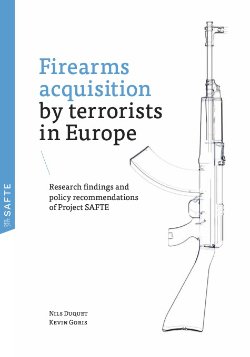Firearms Acquisition by Terrorists in Europe: Research findings and policy recommendations of Project SAFTE
By Nils Duquet and Kevin Goris
Illicit firearms are a phenomenon that mostly elicit attention in times of crisis. Mass shootings or terrorist attacks involving firearms trigger a plethora of questions, including questions regarding the provenance of the firearms that were used. Oftentimes, the firearms used by criminals and terrorists have been procured illegally. This implies that there is a market in illicit firearms where such goods circulate under the radar. The existence of such a market triggers concern but it also speaks to our imagination precisely because we know so little about it. Whether citizen, policy-maker or practitioner, we are all aware that there must be something like ‘an illicit firearms market’ out there. Yet few people, even specialists, can say in a decisive manner what such a market looks like in Europe, which dynamics characterise it or how it has evolved over time. Can we even speak of ‘a market’ or are we dealing with multiple fragmented circuits each characterised by entirely different logics? This uncertainty is driven by the very nature of the phenomena, a covert market is by design hidden from the oversight of state authority. Yet it also has to do with the fact that attention to it tends to be event-driven, and thus misses a sound and structural embedding in broader policy, intelligence or legal frameworks.
-
A further consequence of this is that attempts to study and address illicit firearms markets, and terrorist access to them, have been mostly piecemeal and ad hoc. An overarching understanding of what we talk about when we talk about illicit firearms markets is missing. Our knowledge of the illicit market for firearms very much resembles the Udana parable of the blind men and the elephant: a group of blind men who have never encountered an elephant are asked to describe it based on their palpating of only one part of the creature. Based on this partial impression, they each describe an entirely different phenomenon (a thick snake, a tree trunk, a bumped wall, a fan). None can grasp the entire and true nature of the thing they are confronted with. Moreover, each one of them assumes his (partial) interpretation of reality to be the whole truth.
Brussels: Flemish Peace Institute, 2018. 236p.


